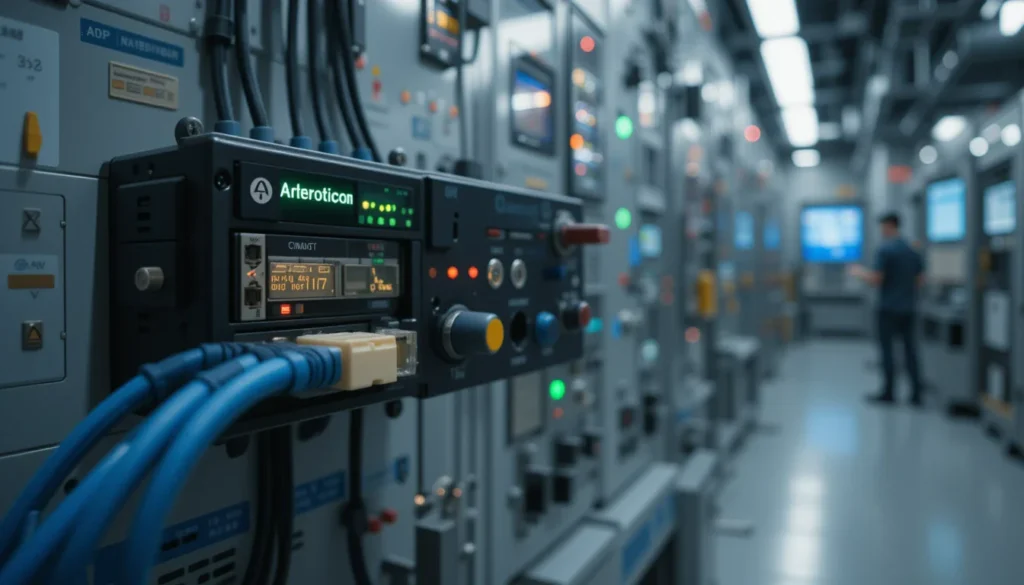Overview
Swedish cybersecurity firm Advenica has launched a cutting-edge Hardware Data Diode in June 2025, aimed at bolstering the security of Industrial Control Systems (ICS) and Operational Technology (OT) networks. The product is designed to prevent data leaks and cyberattacks in critical infrastructure sectors by enforcing unidirectional data flow.
Key Facts
- Launch Date: June 2025
- Product: New generation Hardware Data Diode
- Company: Advenica (Sweden-based cybersecurity firm)
- Target Users: Operators of ICS, SCADA, and critical infrastructure
- Main Feature: One-way data transmission, ensuring air-gapped network integrity
- Industries Affected: Energy, water, transportation, defense, and manufacturing
- Certification: High assurance EU-level certifications expected
What’s Verified and What’s Still Unclear
Verified:
- The diode enforces physical-layer security.
- It supports real-time data monitoring without allowing any incoming traffic.
- Advenica confirms successful pilot testing in energy and utility sectors.
Unclear:
- Widespread commercial adoption details remain undisclosed.
- Pricing and global availability are yet to be publicly released.
- Integration capabilities with legacy ICS/SCADA systems still being evaluated.
Timeline of Events
- May 2025: Product teased at cybersecurity expos in Europe.
- June 20, 2025: Official launch of the Hardware Data Diode.
- June 22, 2025: Advenica publishes whitepaper detailing security features.
- June 24, 2025: Multiple European utility providers report pilot deployments.
- June 25, 2025: Industry forums discuss the implications for OT security.
Who’s Behind It?
Advenica is a well-established Swedish cybersecurity company known for its high-assurance encryption and network segmentation solutions. With over two decades of experience, it serves governments, defense sectors, and critical infrastructure providers across Europe and beyond.
Their goal with the Hardware Data Diode is to deliver a plug-and-play, tamper-proof solution that ensures no possibility of reverse data flow, a critical need for ICS and SCADA environments vulnerable to remote attacks.
Public & Industry Response
The response has been largely positive:
- Cybersecurity Experts: Applaud the hardware-based approach over software firewalls.
- Industrial Operators: Interested in cost-effective air-gap alternatives.
- Critics: Raise concerns about deployment complexity in legacy environments.
- EU Officials: Suggest the diode aligns with EU Cybersecurity Act’s objectives for critical infrastructure resilience.
What Makes This Unique?
Unlike conventional firewalls or software-based unidirectional gateways, Advenica’s Hardware Data Diode uses a physically enforced one-way fiber optic link, eliminating any potential for reverse signaling or software vulnerabilities.
Other standout features include:
- Real-time log mirroring to external monitoring systems.
- Zero trust compatibility.
- Passive network design, which minimizes interference.
- Compact, tamper-evident design for field deployments.
Understanding the Basics
What is a Hardware Data Diode?
A Hardware Data Diode is a cybersecurity device that permits data to flow in one direction only—outbound or inbound—ensuring that sensitive or classified systems remain isolated from external threats. It’s commonly used in:
- Nuclear plants
- Military defense systems
- Water treatment plants
- Industrial manufacturing lines
These diodes ensure absolute segmentation, protecting against remote code execution, ransomware, and data exfiltration.
What Happens Next?
Advenica plans to:
- Expand integration support for various industrial protocols (Modbus, DNP3, OPC UA).
- Partner with SCADA vendors for broader ecosystem adoption.
- Release a mid-size variant optimized for SMEs by Q4 2025.
Organizations across Europe and North America are expected to pilot the diode by the end of 2025, especially in the energy and defense sectors.
Summary
The launch of Advenica’s new Hardware Data Diode marks a significant milestone in OT and ICS security. As cyber threats against critical infrastructure grow more advanced and state-sponsored, physically enforced unidirectional communication offers a definitive safeguard.
With strong initial feedback and alignment with cybersecurity frameworks, this diode could redefine how governments and private sector operators approach air-gapped security.
